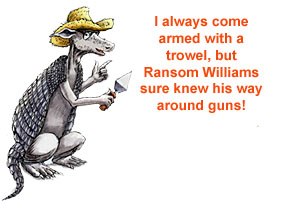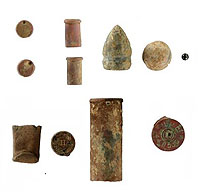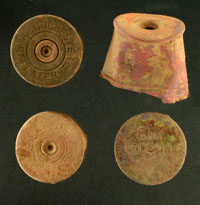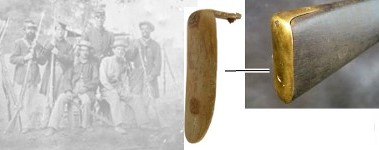 A gun was an important tool for people living in rural areas in the late 1800's. Farmers usually needed to hunt to add food to their family table. They also needed a weapon to protect their farm from intruders and their livestock from attacks by wild animals, such as wolves and coyotes. For these reasons, the archeologists were not surprised to find gun parts and ammunition at the Williams farm. They were a bit surprised, however, at the many types of gun-related artifacts they uncovered.
A gun was an important tool for people living in rural areas in the late 1800's. Farmers usually needed to hunt to add food to their family table. They also needed a weapon to protect their farm from intruders and their livestock from attacks by wild animals, such as wolves and coyotes. For these reasons, the archeologists were not surprised to find gun parts and ammunition at the Williams farm. They were a bit surprised, however, at the many types of gun-related artifacts they uncovered.
In addition to the ammunition, the archeologists found the rusted remains of a variety of weapons, including a hammer and breech plug. These were part of a black powder muzzle-loading shotgun. (Muzzle-loading guns were loaded from the top, or front end of the gun.) Based on cartridge heads, at least three shotguns are represented. A shotgun is a very versatile firearm that can be used for hunting birds and small game (like quail, dove, squirrels, and rabbits) as well as large game (such as deer). A shotgun could also provide a good deal of security and is an excellent close-range weapon for self defense. Living in an isolated location during the Jim Crow era, the Williamses were certainly aware of the potential for racial violence, and personal protection may have been an important consideration.

|

|




 All these guns would have needed repairs from time to time, and the archeologists found several tools for just that use. A wrench used for working on a muzzle-loading gun and a pocket screwdriver are pictured at left. The screwdriver was a folding set that would have been used to disassemble and repair firearms.
All these guns would have needed repairs from time to time, and the archeologists found several tools for just that use. A wrench used for working on a muzzle-loading gun and a pocket screwdriver are pictured at left. The screwdriver was a folding set that would have been used to disassemble and repair firearms.